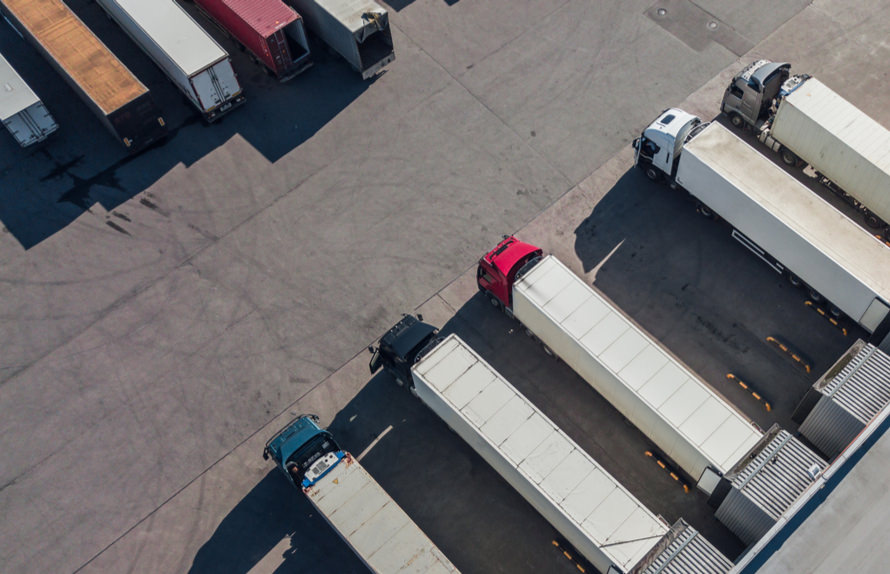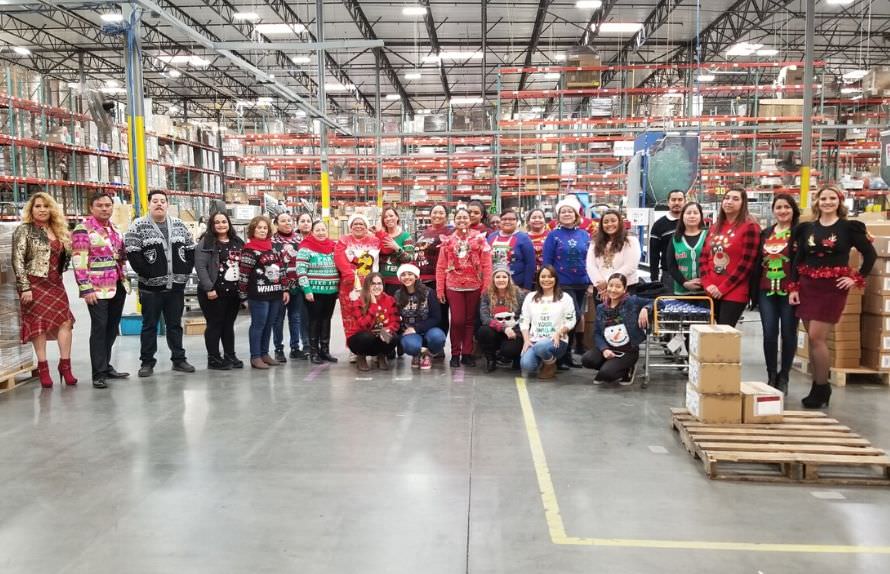
How to Leverage In-Country Fulfillment: 3 International Shipping Strategies for a Growing Ecommerce Business Shipping Internationally
Ecommerce businesses need an agile and international strategy to meet the needs of global sales; all brands now have access to international customers as a default of selling online.
Benefits of In-Country Fulfillment
In-country fulfillment means that if a US based company is selling products to UK customers, the goods go directly to the UK and are fulfilled from a UK warehouse, rather than importing goods to the US then exporting them to the UK.
Most obviously a big benefit of in-country fulfillment is reduced shipping costs. Instead of sending 100 products from the US directly to 100 customers in the UK by international shipping, it’s more cost-effective to consolidate the 100 products into one international shipment into the UK warehouse and then do local shipping.
Take these two scenarios:
- #1 – International shipping: A company manufactures goods in China and ships them into the US, paying the 30% tariff rate (as of May 19) for each shipment. The goods are shipped to individual customers in Canada, UK, and the EU. With reciprocal tariffs the company gets charged tariffs again when shipping them direct to customers.
- #2 – In-country fulfilment: A US company with Chinese-manufactured goods sets up warehousing and tax paying in each country where they have customers: Canada, UK, the EU. The company can directly import goods to their Canadian, UK, EU warehouse, and pay taxes directly. They now bypass the supply-chain headaches and any double tariffs.
3 Ways to Set-Up In-Country Fulfillment: Non-Resident Importer (IoR), Tax Entity, Merchant of Record
To get set up for in country fulfillment with a local warehouse, the company must be able to import to the foreign country and be properly set up for taxes.
To do so, a business must decide how they want to handle tax payments in the new country. There are three main ways to do this, which vary widely in cost, set-up, and benefits.
- Importer of Record (IoR), also called Non-Resident Importer or Foreign Importer – Allows a company to import goods and fulfill orders locally without forming a legal entity. Requires local tax registration (e.g., VAT ID), but avoids income tax and hiring laws. You maintain control over operations and branding.
- Permanent Establishment (Local Tax Entity) – Involves creating a local legal entity to manage operations, hire staff, and file income taxes. Best for brands with long-term plans in the country. Offers full control but comes with higher compliance and cost.
- Merchant of Record (MoR) — A third party handles import, tax, and compliance under their name. The fastest way to enter a market with minimal setup. Ideal for testing new regions but offers less control and higher ongoing costs.
Non-Resident Importer: Benefits of Being a Foreign Importer or IoR
The simplest option of the three is getting set up as a foreign or non-resident importer also known as foreign importer or importer of record (IoR).
Which countries? Australia, Canada, the EU (26 European Union countries), New Zealand, and the UK offer the option of getting set up as a non-resident or foreign importer.
What is the process? You need to register your company with a tax identification to be listed as the importer of record (IoR). IoR means that your ecommerce company is the official importer and is responsible for all the import fees and customs duties.
The setup is quite simple and relatively inexpensive.
When a company imports to any of the above countries, it must pay the GST (goods and service tax) in Australia, Canada, New Zealand or VAT (value added tax) in the EU and the UK. GST/VAT essentially means the same thing. The US is one of the very few countries that does not have GST/VAT. The closest US equivalent is the sales tax on sale of goods.
For example, if you’re setting up a warehouse in the UK, you’ll need a UK VAT number to become the IoR. The UK has a quarterly VAT return filing (where you’ll pay compliance costs). Your company will pay income taxes on the sales to the UK on the US tax return. This minimizes tax compliance.
The setup process is quite similar for Australia, Canada, AU, and the European Union.
Advantages:
- You are not required to set up a local tax entity and pay income taxes.
- You have a net zero tax liability as GST/VAT. You will pay VAT/GST when importing, but this is a pass-through tax, i.e. refundable.
- It’s a simple, cost-effective solution, best for companies wanting to use local warehouses and manage fulfillment efficiently without setting up a full business presence.
Example.
A US ecommerce business wants to sell in the EU by setting up a warehouse in the UK.
The company imports products into the UK at the manufacturing price of £90 and pays shipping of £10 from China to the UK. The total import cost is £90 + £10 = £ 100. The VAT rate in the UK is 20%, and the company pays 20% import VAT = £20 on this to the UK Government.
The company’s customs broker pays on the company’s behalf. It is very important to be the IoR, because the import VAT is returned when the taxes are filed. This import VAT will be returned at the end of the quarter.
Now the company sells the products at the sales price of £280 and charges £20 in shipping to the end customer. The total cost to the end customer is £300.
The company collects 20% VAT on £300 from the end customer (£60). At the end of the quarter, when the tax return is filed, the company pays the 20% VAT collected (£60) to the government and the import VAT (£ 20) is returned to the company. (This is the net zero liability, pass-through tax).
Permanent Establishment: Benefits of Setting Up a Local Tax Entity
Many growing ecommerce businesses shipping into new countries just need a warehouse in the country. They may not have the bandwidth to set up offices or hire employees in the new country. By setting up as a non-resident importer, they can have a warehouse presence and unlock the ability to sell across all channels such as B2C, B2B and marketplaces—but not worry about the headaches of opening a full operation in another country.
But if your company is planning large-scale or long-term investments in the country, you’ll want to consider setting up a tax entity. This is a great option if you plan to open an office or hire employees.
What is the process?
This involves setting up a legal business presence in the destination country.
This is required if you have employees in the country of import. You’ll need account for payroll tax, unemployment tax and the compliance burden increases significantly.
Advantages:
- Full control of all operations.
- Long-term presence and foundation for sustained operations.
Drawbacks:
- Responsibility to pay income taxes in the country of import.
- Significant investment, legal compliance, and resources to run local operations.
Common Providers: Global expansion consultancies, law/accounting firms (e.g., PwC, TMF Group).
Merchant of Record (MOR): Benefits of Outsourcing to a Third-Party Provider
If you are newer to a specific market or wanting to test out a new country, you may want to work with a third-party provider to be the merchant of record for your brand.
What is the process?
A brand may choose to hire a third party to import goods on behalf of your company. The MoR will pay the import VAT and manage all compliance and tax filings.
Hiring an MoR can be a great option for fast market entry; it also often comes with a higher cost. It’s not an ideal long-term solution for a growing ecommerce brand.
Advantages:
- Easiest and fastest market entry.
- The company does not need to handle taxes or logistics.
Drawbacks:
- Often MoR providers charge the company a fee per transaction or a % of revenue, leading to potentially higher overall costs as the business revenue grows.
- Depending on the provider, MoRs may either ship internationally on a per-order basis or use their own local warehousing. Brands should confirm the fulfillment model to avoid high shipping costs.
- Less control over branding, pricing, and customer data.
Common Providers: Global-e, Flow, Digital River, Stripe Atlas (partial MoR services).
Impacts of Current Trade Headwinds and Predictions for the Future
Tariff pressures and regulatory uncertainty are high in many global markets. For US-based brands looking to expand global sales, this is an incredibly difficult time to grow an ecommerce brand.
A typical US-based ecommerce brand generates approximately 40% of their sales revenue from North American customers (US/Canada), approximately 45% from Europe (including the UK), and approximately 3% from Australia, 2% from Japan and the remainder from the rest of world. But the current shifts in international trade negotiations may make this percentage breakdown likely to change in the coming 10 or 15 years. Some speculate more revenue will start to come from South America, South Asia, and Africa because per capita income in these regions is steadily increasing, even though as of today, there are regulatory and bureaucratic hurdles that make spending in these regions difficult.
The need to keep your supply chain agile is imperative, and it will become more important if the global economy shifts in the coming years.
Munish Gupta is the founder of Supply Chain Advisory Group. The company helps clients expand into 50+ countries by offering logistics and tax consulting. He is a Wharton MBA/UCLA Electrical Engineer and worked in global corporate global supply chains (for 15 years before branching out on his own. International trade is in his blood, and he has travelled to over 80 countries he has written extensively in Asia, Europe and North America and speaks English, Italian, French, Hindi, Punjabi and some Spanish .He can be reached at: [email protected]
Tags: International







